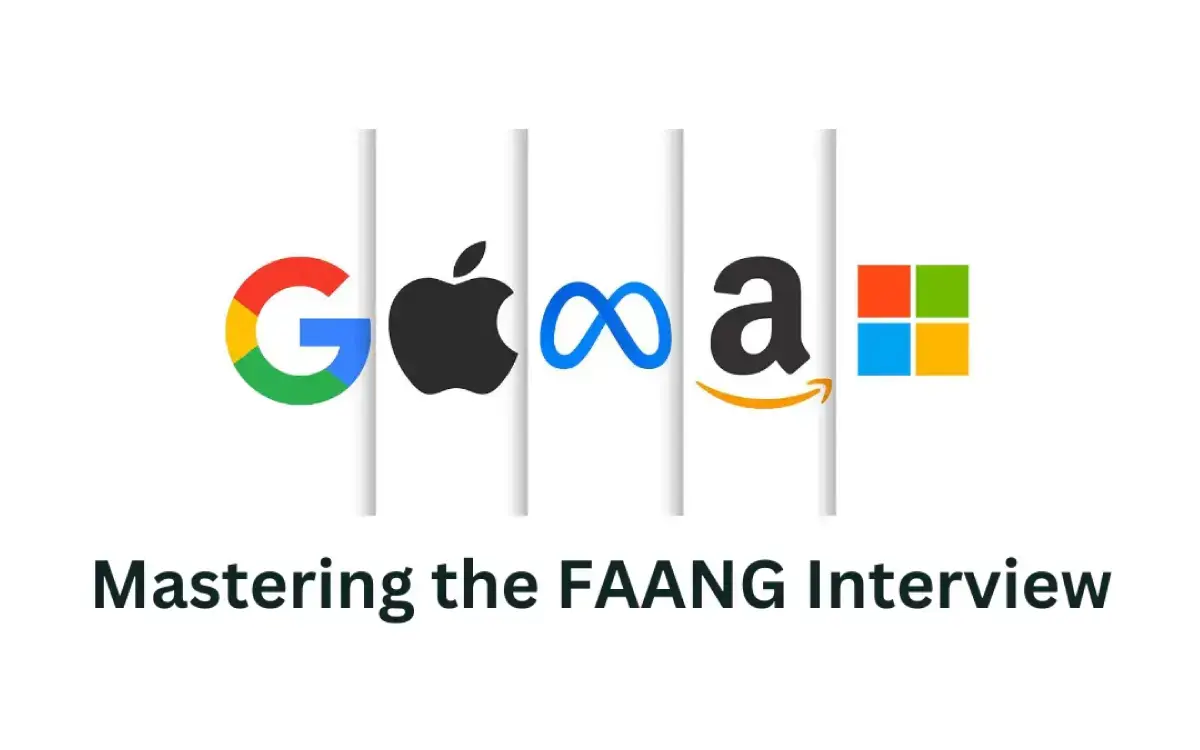1. Introduction
If you're a software engineer aspiring to work at Uber, you already know that machine learning (ML) is at the heart of their operations. From predicting ride ETAs to optimizing dynamic pricing and enhancing Uber Eats recommendations, ML powers some of the most critical features of Uber’s platform. Landing a machine learning role at Uber is a dream for many, but it’s no walk in the park. The interview process is rigorous, and the competition is fierce.
That’s where we come in. At InterviewNode, we specialize in helping software engineers like you prepare for ML interviews at top companies like Uber. In this blog, we’ve compiled the top 25 frequently asked questions in Uber ML interviews, complete with detailed answers to help you ace your next interview. Whether you’re a seasoned ML engineer or just starting out, this guide will give you the edge you need to stand out.
So, grab a cup of coffee, and let’s dive into the world of Uber’s ML interviews!
2. Understanding Uber’s ML Interview Process
Before we jump into the questions, it’s important to understand what the interview process at Uber looks like. Uber’s ML interviews are designed to test not only your technical knowledge but also your problem-solving skills and ability to apply ML concepts to real-world scenarios.
Stages of the Interview Process
Phone Screen: A recruiter or hiring manager will conduct an initial call to assess your background and interest in the role.
Technical Screening: You’ll be asked to solve coding and ML problems, often via a platform like HackerRank or a live coding session.
Onsite Interviews: This typically includes 4-5 rounds covering:
Coding and Algorithms: Focused on data structures and algorithms.
Machine Learning Concepts: Deep dives into ML theory and practical applications.
System Design: Designing scalable ML systems.
Behavioral Questions: Assessing your fit within Uber’s culture.
Case Studies: You’ll be given real-world problems (e.g., improving Uber’s surge pricing model) to solve on the spot.
What Uber is Looking For
Strong foundational knowledge of ML concepts.
Ability to apply ML techniques to solve business problems.
Clear communication and collaboration skills.
A passion for innovation and problem-solving.
Now that you know what to expect, let’s get to the heart of the matter: the top 25 questions you’re likely to face in an Uber ML interview.
3. Top 25 Frequently Asked Questions in Uber ML Interviews
We’ve categorized the questions into five sections to make it easier for you to navigate and prepare:
Foundational ML Concepts
Algorithms and Models
Data Preprocessing and Feature Engineering
Model Evaluation and Optimization
Case Studies and Practical Applications
Let’s tackle each section one by one.
Section 1: Foundational ML Concepts
1. What is the bias-variance tradeoff?
The bias-variance tradeoff is a fundamental concept in machine learning that deals with the balance between underfitting and overfitting.
Bias refers to errors due to overly simplistic assumptions in the learning algorithm. High bias can cause an algorithm to miss relevant relations between features and target outputs (underfitting).
Variance refers to errors due to the model’s sensitivity to small fluctuations in the training set. High variance can cause overfitting, where the model captures noise instead of the underlying pattern.
Example: Imagine you’re building a model to predict Uber ride prices. A high-bias model might oversimplify the relationship between distance and price, while a high-variance model might overcomplicate it by considering irrelevant factors like the color of the car.
How to Handle It:
Reduce bias by using more complex models (e.g., decision trees instead of linear regression).
Reduce variance by using regularization techniques or increasing the training data.
2. Explain the difference between supervised and unsupervised learning.
Supervised Learning: The model is trained on labeled data, where the input features are mapped to known output labels. Examples include regression and classification tasks.
Uber Use Case: Predicting ETAs for rides based on historical data.
Unsupervised Learning: The model is trained on unlabeled data and must find patterns or structures on its own. Examples include clustering and dimensionality reduction.
Uber Use Case: Grouping similar Uber Eats restaurants for targeted promotions.
3. How do you handle overfitting in a model?
Overfitting occurs when a model performs well on training data but poorly on unseen data. Here’s how to handle it:
Regularization: Add penalties for complex models (e.g., L1/L2 regularization).
Cross-Validation: Use techniques like k-fold cross-validation to evaluate model performance.
Simplify the Model: Reduce the number of features or use a simpler algorithm.
Increase Training Data: More data can help the model generalize better.
Example: If your Uber Eats recommendation system is overfitting, you might reduce the number of features (e.g., remove less relevant ones like restaurant decor) or use regularization to penalize overly complex models.
4. What is cross-validation, and why is it important?
Cross-validation is a technique used to assess how well a model generalizes to an independent dataset. The most common method is k-fold cross-validation, where the data is split into k subsets, and the model is trained and validated k times, each time using a different subset as the validation set.
Why It’s Important:
It provides a more accurate estimate of model performance.
It helps detect overfitting by testing the model on multiple subsets of data.
Example: When building a model to predict Uber ride demand, cross-validation ensures that your model performs well across different times and locations, not just on a single training set.
5. Explain the concept of regularization and its types.
Regularization is a technique used to prevent overfitting by adding a penalty for larger coefficients in the model. The two main types are:
L1 Regularization (Lasso): Adds the absolute value of coefficients as a penalty. It can shrink less important features to zero, effectively performing feature selection.
L2 Regularization (Ridge): Adds the squared value of coefficients as a penalty. It shrinks coefficients but doesn’t eliminate them entirely.
Example: In Uber’s dynamic pricing model, L1 regularization might help identify the most critical features (e.g., demand, traffic) while ignoring less relevant ones.
Section 2: Algorithms and Models
6. Describe the working of a decision tree.
A decision tree is a flowchart-like structure where each internal node represents a decision based on a feature, each branch represents the outcome of that decision, and each leaf node represents a class label or a continuous value.
How It Works:
Start at the root node.
Split the data based on the feature that provides the best separation (e.g., using Gini impurity or information gain).
Repeat the process for each subset until a stopping criterion is met (e.g., maximum depth).
Example: A decision tree could be used to predict whether an Uber ride will be canceled based on features like time of day, distance, and user rating.
7. How does a random forest algorithm work?
A random forest is an ensemble of decision trees. It works by:
Building multiple decision trees on random subsets of the data (bootstrap sampling).
At each split, selecting a random subset of features.
Aggregating the predictions of all trees (e.g., using majority voting for classification or averaging for regression).
Why It’s Powerful:
Reduces overfitting compared to a single decision tree.
Handles noisy data well.
Example: Uber might use a random forest to predict ride cancellations by combining the predictions of multiple decision trees trained on different subsets of data.
8. Explain the concept of gradient boosting.
Gradient boosting is an ensemble technique that builds models sequentially, with each new model correcting the errors of the previous one. It uses gradient descent to minimize a loss function.
How It Works:
Start with a simple model (e.g., a single decision tree).
Calculate the residuals (errors) of the model.
Build a new model to predict the residuals.
Repeat the process until the residuals are minimized.
Example: Gradient boosting could be used to improve the accuracy of Uber’s ETA predictions by iteratively correcting errors in the model.
9. What is a neural network, and how does it learn?
A neural network is a computational model inspired by the human brain. It consists of layers of interconnected nodes (neurons) that process input data and produce an output.
How It Learns:
Forward Propagation: Input data is passed through the network to generate predictions.
Loss Calculation: The difference between predictions and actual values is calculated using a loss function.
Backpropagation: The network adjusts its weights using gradient descent to minimize the loss.
Example: Uber uses neural networks in its self-driving car division to process sensor data and make real-time driving decisions.
10. Can you explain the difference between bagging and boosting?
Bagging: Builds multiple models independently and combines their predictions (e.g., random forests). It reduces variance and is robust to overfitting.
Boosting: Builds models sequentially, with each new model focusing on the errors of the previous one (e.g., gradient boosting). It reduces bias and improves accuracy.
Example: Bagging might be used to predict Uber ride demand across different cities, while boosting could be used to refine the accuracy of ETA predictions.
Section 3: Data Preprocessing and Feature Engineering
11. How do you handle missing data in a dataset?
Missing data can be handled in several ways:
Remove Rows: If the missing data is minimal.
Imputation: Replace missing values with the mean, median, or mode.
Predictive Models: Use algorithms like k-nearest neighbors (KNN) to predict missing values.
Example: If some Uber ride data is missing (e.g., driver ratings), you might impute the missing values with the average rating.
12. What is feature scaling, and why is it important?
Feature scaling is the process of normalizing or standardizing the range of features in a dataset. It’s important because:
Algorithms like SVM and k-means are sensitive to the scale of features.
It speeds up convergence in gradient descent-based algorithms.
Example: When building a model to predict Uber ride prices, you might scale features like distance and time to ensure they contribute equally to the model.
13. Explain the concept of one-hot encoding.
One-hot encoding is a technique used to convert categorical variables into a binary format. Each category is represented as a binary vector with a single "1" and the rest "0s".
Example: If you have a categorical feature like "ride type" (e.g., UberX, Uber Black), one-hot encoding would create separate binary columns for each ride type.
14. How do you deal with categorical variables in a dataset?
Categorical variables can be handled using:
One-Hot Encoding: For nominal categories.
Label Encoding: For ordinal categories (e.g., low, medium, high).
Target Encoding: Replace categories with the mean of the target variable.
Example: In Uber’s ride data, you might use one-hot encoding for ride types and label encoding for user ratings.
15. What is the importance of feature selection in ML?
Feature selection helps:
Improve model performance by removing irrelevant or redundant features.
Reduce overfitting and training time.
Enhance interpretability.
Example: When building a model to predict Uber ride cancellations, you might select only the most relevant features (e.g., time of day, user rating) to improve accuracy.
Section 4: Model Evaluation and Optimization
16. How do you evaluate the performance of a classification model?
Common evaluation metrics include:
Accuracy: Percentage of correct predictions.
Precision and Recall: Precision measures the accuracy of positive predictions, while recall measures the proportion of actual positives correctly identified.
F1 Score: Harmonic mean of precision and recall.
ROC-AUC: Area under the receiver operating characteristic curve.
Example: When evaluating a model to detect fraudulent Uber rides, you might prioritize recall to ensure most fraud cases are caught.
17. What is the ROC curve, and how is it used?
The ROC curve plots the true positive rate (TPR) against the false positive rate (FPR) at various thresholds. The area under the curve (AUC) measures the model’s ability to distinguish between classes.
Example: An ROC curve can help you choose the optimal threshold for Uber’s fraud detection model.
18. Explain the concept of precision and recall.
Precision: The ratio of true positives to all positive predictions (TP / (TP + FP)).
Recall: The ratio of true positives to all actual positives (TP / (TP + FN)).
Example: In Uber’s fraud detection system, high recall ensures most fraud cases are caught, while high precision ensures that flagged cases are indeed fraudulent.
19. How do you optimize hyperparameters in a model?
Hyperparameters can be optimized using:
Grid Search: Exhaustively search through a specified parameter grid.
Random Search: Randomly sample from a parameter space.
Bayesian Optimization: Use probabilistic models to find the best parameters.
Example: When tuning Uber’s ETA prediction model, you might use grid search to find the optimal learning rate and tree depth.
20. What is the difference between L1 and L2 regularization?
L1 Regularization: Adds the absolute value of coefficients as a penalty. It can shrink coefficients to zero, effectively performing feature selection.
L2 Regularization: Adds the squared value of coefficients as a penalty. It shrinks coefficients but doesn’t eliminate them.
Example: L1 regularization might be used in Uber’s dynamic pricing model to identify the most critical features, while L2 regularization could be used to prevent overfitting.
Section 5: Case Studies and Practical Applications
21. How would you design a recommendation system for Uber Eats?
A recommendation system for Uber Eats could use collaborative filtering, content-based filtering, or hybrid approaches. Steps include:
Collect user data (e.g., past orders, ratings).
Use collaborative filtering to recommend restaurants based on similar users.
Use content-based filtering to recommend restaurants based on user preferences (e.g., cuisine type).
Combine both approaches for a hybrid system.
22. Can you explain how Uber uses ML for dynamic pricing?
Uber’s dynamic pricing (surge pricing) uses ML to adjust prices based on real-time demand and supply. Factors include:
Current ride demand.
Driver availability.
Traffic conditions.
Historical data.
Example: During peak hours, prices increase to incentivize more drivers to be available.
23. How would you approach a problem of predicting ETAs for Uber rides?
To predict ETAs, you could:
Collect data on ride distance, traffic, weather, and historical ETAs.
Use regression models (e.g., linear regression, gradient boosting) to predict ETAs.
Continuously update the model with real-time data.
24. What ML techniques would you use to detect fraudulent activities on Uber?
Fraud detection could involve:
Anomaly detection algorithms (e.g., isolation forests).
Supervised learning models trained on labeled fraud data.
Real-time monitoring and alert systems.
25. How would you improve the accuracy of Uber’s surge pricing model?
To improve surge pricing accuracy:
Incorporate more features (e.g., weather, events).
Use ensemble models to combine predictions from multiple algorithms.
Continuously validate and update the model with real-world data.
4. Tips for Acing Uber’s ML Interview
Understand Uber’s Business Model: Familiarize yourself with how Uber uses ML in its operations.
Practice Case Studies: Be prepared to solve real-world problems on the spot.
Communicate Clearly: Explain your thought process and reasoning during the interview.
Leverage InterviewNode: Use our mock interviews and resources to practice and refine your skills.
5. Conclusion
Preparing for an ML interview at Uber can be challenging, but with the right resources and practice, you can succeed. We hope this guide to the top 25 frequently asked questions in Uber ML interviews has given you a solid foundation to build on. Remember, InterviewNode is here to help you every step of the way.
Ready to take your ML interview preparation to the next level? Register for our free webinar today to explore our mock interviews, courses, and resources designed to help you land your dream job at Uber. Let’s make your career aspirations a reality!






